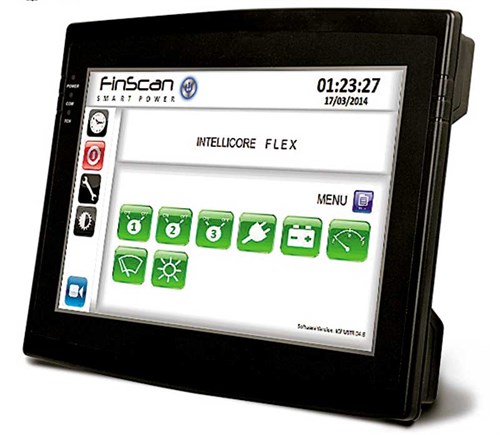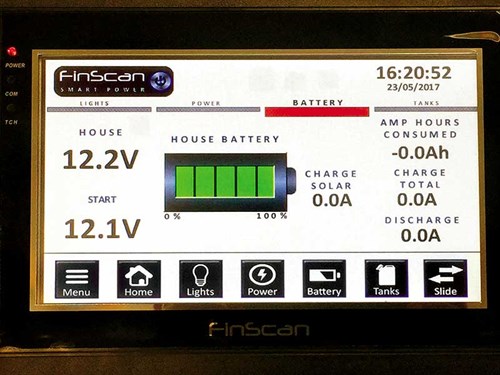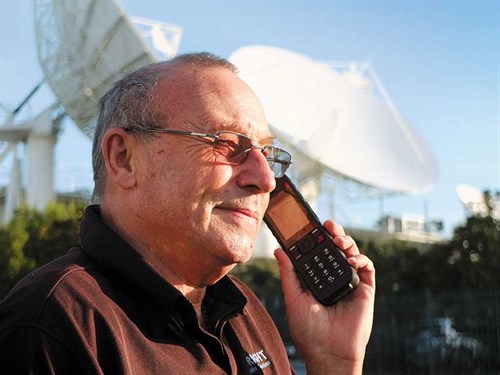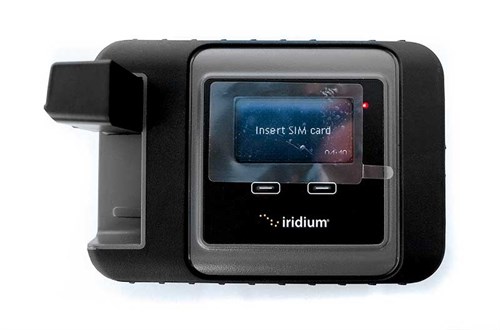Finscan

Every so often, a product comes along that promises to change the way we do things.
FinScan, introduced at the recent Covi show in Auckland by entertainment system specialists, RSE, is one such product.
It has already been adopted by two New Zealand RV manufacturers, TrailLite and Auckland Coachbuilders and Motorhomes.
Australian company FinScan, designs and manufactures these digital switching systems for boats and RVs.
At its core is the Nucleus IntelliCORE processor. This receives electronic data from any onboard system the user wishes to control or monitor and displays it on the intuitive touchscreen display panel.
Much like an iPad, this panel comes in two sizes, seven- and 10-inch, and is used to operate the systems being monitored.
A single cable connects the display panel and the Nucleus IntelliCORE processor (CPU). The CPU cabinet also contains all fuses and circuit breakers, simplifying installation.

The items usually controlled/monitored are battery management, tank monitoring, central heating, water heating, keyless touchpad entry, and lighting.
Other items such as slide-out control, external hatch locking, entertainment (audio, TV, and satellite aerials) are common choices on larger rigs.
The system is completely programmable to meet the owner’s needs and all touch switches, icons, and wording can be customised.
All controls and monitoring are consolidated into one location, making it much easier to keep track of all onboard functions.
And the system is not just for new builds. It can just as easily be retro-fitted to an existing RV.
As it has already done in the marine industry, this user-friendly product will revolutionise the way RV power systems are designed installed and operated.
Smartphone apps for both Android and iOS are available that mirror the FinScan touchpad on the phone, allowing owners to monitor and control the system remotely.
RSE calls it ‘Intelligence at your Fingertips’.
Satellite phones

Most of us are familiar with cell phones but satellite phones (satphones) are a bit of a mystery.
Some features are common to both. They are small, hand-held, and portable, have ‘sim’ cards, can handle voice and data, most handle e-mails, and both communicate wirelessly through a repeater station.
But this i where they differ. If the cell phone’s cellular tower (repeater station) is within range, cell phone communication is possible.
The satellite phone’s repeater station is in Earth’s orbit. Just like a TV satellite aerial must ‘see’ the satellite to receive the TV signal, the satellite phone must ‘see’ the satellite to make communication possible.
Satphone’s satellite networks are either in fixed position, around 36,000km above the equator (Geostationary), or in low orbit (780 to 1000km) above the Earth.
Being off-the-grid, satphones are much less prone to disruption by weather systems, earthquakes, or civil strife. Because of this, along with the price reductions that have occurred in recent times, satphones are becoming increasingly popular.

Two networks are available in New Zealand. Iridium, a low orbit system launched by Motorola around 1997, and the Geostationary satellite system of Inmarsat, who introduced the IsatPhone Pro handset in 2010. These are regarded as the only reliable global networks.
Inmarsat’s entry-level satphone in New Zealand is the IsatPhone2 retailing for $1610. Another option is the Iridium Go at $1714. It is a satellite connection box that allows up to five devices (tablets, smartphones, etc) one at a time to connect wirelessly to the satellite phone system.
Airtime rates, both prepaid and monthly contract, are many and varied and designed to meet buyers’ needs and circumstances. Curiously, airtime plans are all in USD.
Insarmat’s standard entry plan is a monthly subscription and minimum contract period of one month with 10 airtime minutes included for US$35.50 per month plus additional minutes starting at US$0.99 per minute.
Larger minute plans can reduce the cost per minute. Generally, overseas travellers and those travelling to Asia, Africa, or South America, in particular, will find the satphone airtime rates compare favourably with cell phone roaming charges.
So, if you plan to go bush, either here or overseas, and staying in touch 24/7 is important you, check out a satphone. And you can try before you buy by renting one.





